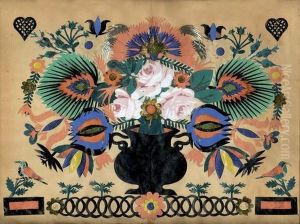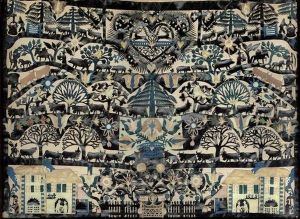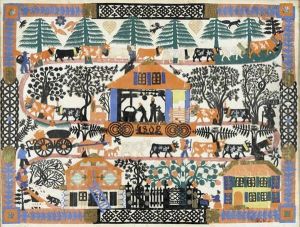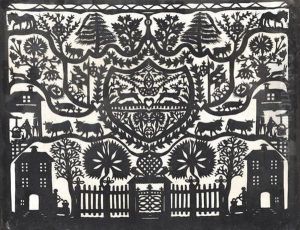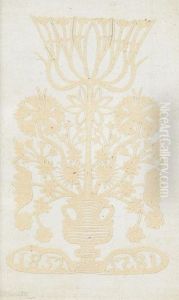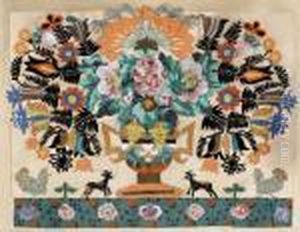Hans Johan Jakob Hauswirth Paintings
Hans Jakob Hauswirth, known as Johann Jakob Hauswirth, was a Swiss folk artist born on March 27, 1809, in Madiswil, Canton of Bern. He was a self-taught artist, best known for his paper cutting works, which are a traditional Swiss art form. Hauswirth's life was largely rooted in the rural traditions of his homeland, and this is reflected in his art, which often depicts scenes of rural life, animals, and landscapes, as well as religious themes.
Hauswirth began his working life as a mercenary and later became a farmhand. His artistic career only started later in life, which was not uncommon at the time for folk artists. Hauswirth's paper cuttings, or 'Scherenschnitte' as they are known in German, were meticulously crafted with scissors or knives, and they became his primary medium. Unlike many artists of his era, Hauswirth did not receive formal art training but developed his craft independently, drawing inspiration from his immediate surroundings.
The subjects of Hauswirth's work often included intricate representations of community life, nature, and biblical stories. His compositions were characterized by their detailed and delicate execution and the contrast between the black paper and the negative space. His works were typically made on a large scale, some measuring several feet in length, and were highly sought after during his lifetime.
Despite his lack of formal recognition during his life and the fact that he lived modestly, Hauswirth's work gained posthumous acclaim. Today, his pieces can be found in various Swiss museums, including the Swiss National Museum in Zurich, and are celebrated for their contribution to the folk art heritage of Switzerland. Johann Jakob Hauswirth's death on February 23, 1871, marked the end of a career that had a lasting impact on Swiss folk art, preserving a visual record of 19th-century rural life in Switzerland.
